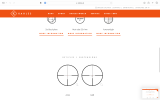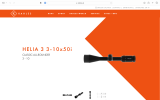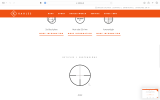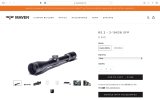Thanks for the kind words
Wishfulthinker580, here is the post, for everyone's convenience
 Why a 30 mm tube on scopes with objective bells...
Why a 30 mm tube on scopes with objective bells...
The 30 mm tube choice has nothing to do with light transmission. The only advantage a 30 mm tube has over a 1" tube on a scope with an objective bell, is that it allows more room internally for a wider range of adjustment of the scope erector, i.e. the mechanism that holds the reticle:
- The reason why European scopes standardized at 30 mm instead of 25 mm is that in days when the tolerances on the mounting of scope bases were much looser than today, a 30 mm scope generally had enough internal adjustment to avoid having to shim the bases and/or the rings. 25 mm scopes often needed external adjustment in addition to internal adjustment. A definite weakness...
- The reason why virtually all modern military scopes have 30 mm tubes is similar, but applied to a different purpose. More internal adjustment allows more elevation clicks to shoot farther.
- The reason why some military scopes are now available with 34 mm tubes is more of the same: more internal elevation clicks for latest longer range loads (e.g. Lapua, etc.).
Why a 30 mm tube on scopes without objective bells...
First we need to explain a little more the exit pupil concept. Yes, human pupil vary in diameter from 2 mm to 7 mm, but the application of this fact has nothing to do with the
tube diameter, because indeed whether the tube be 25 mm, 1" (25.4 mm), 30 mm or 34 mm is irrelevant to a 7 mm light beam.
@Bert the Turtle is correct!
The application of the basic rule that a 7 mm light beam must desirably reach the pupil at full dilatation in low light condition applies to the diameter of the
objective. The basic rule is that magnification x light beam diameter determines the diameter of the objective. This is the reason why most European x6 scopes have a 42 mm objective (6x 7mm = 42 mm), most European x8 scopes have a 56 mm objective (8x 7mm = 56 mm), etc.
This is the reason why a straight 1" tube DG scope with 20 mm objective on a .375 H&H rifle that may see yeoman service on a 1 rifle safari involving early or late shooting, is not ideal. Regardless of glass quality, a 1.5-4x20 straight tube 1" scope only produces a 5 mm light beam at 4x (20 / 4 = 5). This typically means 5 to 10 less minutes of shooting light at dawn or dusk, and that may make all the difference in the world, where legal...
Everything else (such as glass and coatings quality) being equal, you will factually see a Leopard at dusk, or a Kudu at dawn, better with a 42 mm objective than with a 20 mm objective because a 42 mm objective will collect a 7 mm light beam at 6x and a 20 mm objective will only collect a 5 mm beam at 4x. The best glass in the world, from whichever manufacturer, will not make up for this. Period.
A straight 30 mm tube DG scope with 24 mm objective is a step in the right direction. At 4x a 24 mm objective gives you a 6 mm light beam. This is not as good as 7 mm, but this is appreciably better that 5 mm.
I personally play the game on both ends: I use a 30 mm straight tube because of its 24 mm objective, and I rarely use it at more than 3.5x because it produces a 7 mm light bean at that magnification, and anyway I do not shoot far in general when I use a DG rifle... and anyway I am incapable of seeing a difference between 3.5x and 4x... and anyway any variable optic from any manufacturer will typically not have the best image quality at max power...
Please note that all these considerations disappear when using the scope in full day light when a younger shooter pupil is shrinking to 2 mm and an older shooter pupil is shrinking to 3 mm. This is why a modern straight tube scope with a lot of magnification still makes some level of sense. It would be a gross misuse of a Z8i 1-8x24 to try to use it at 8x at dawn or dusk because its 3 mm beam would not even carry half the light the shooter could use and would need, but at high noon this 3 mm beam would work just fine. Although why one would want 8x on a DG rifle scope escapes me...
In summary:
- A 30 mm tube provides a wider internal adjustment range, which may solve a less than perfectly aligned scope mount issue, and which allows more internal elevation clicks, useful for long range shooting;
- On straight tube scopes a 30 mm tube provides a larger objective diameter over a 1" tube (typically 24 mm over 20 mm), which increases the diameter of light beam reaching the shooter's eye at any magnification considered.










